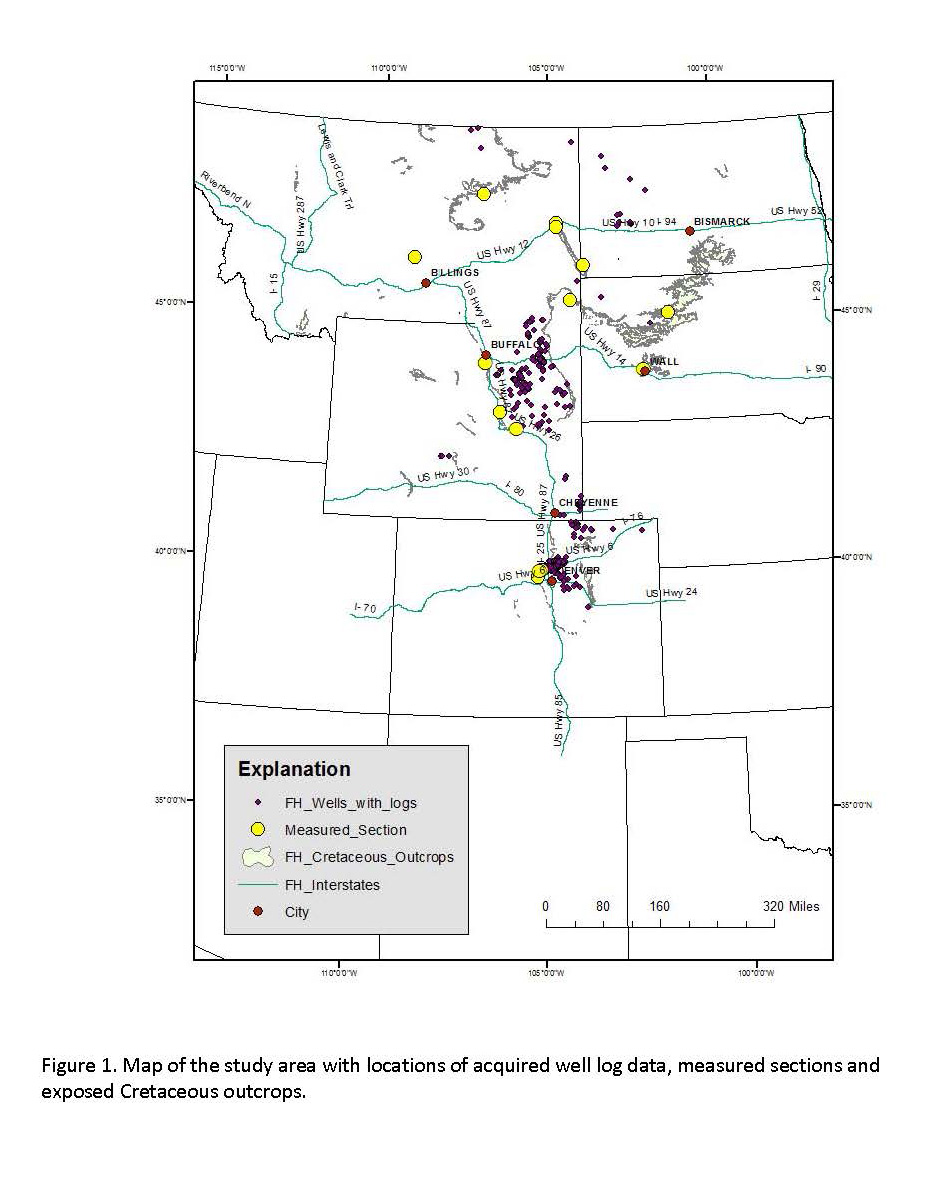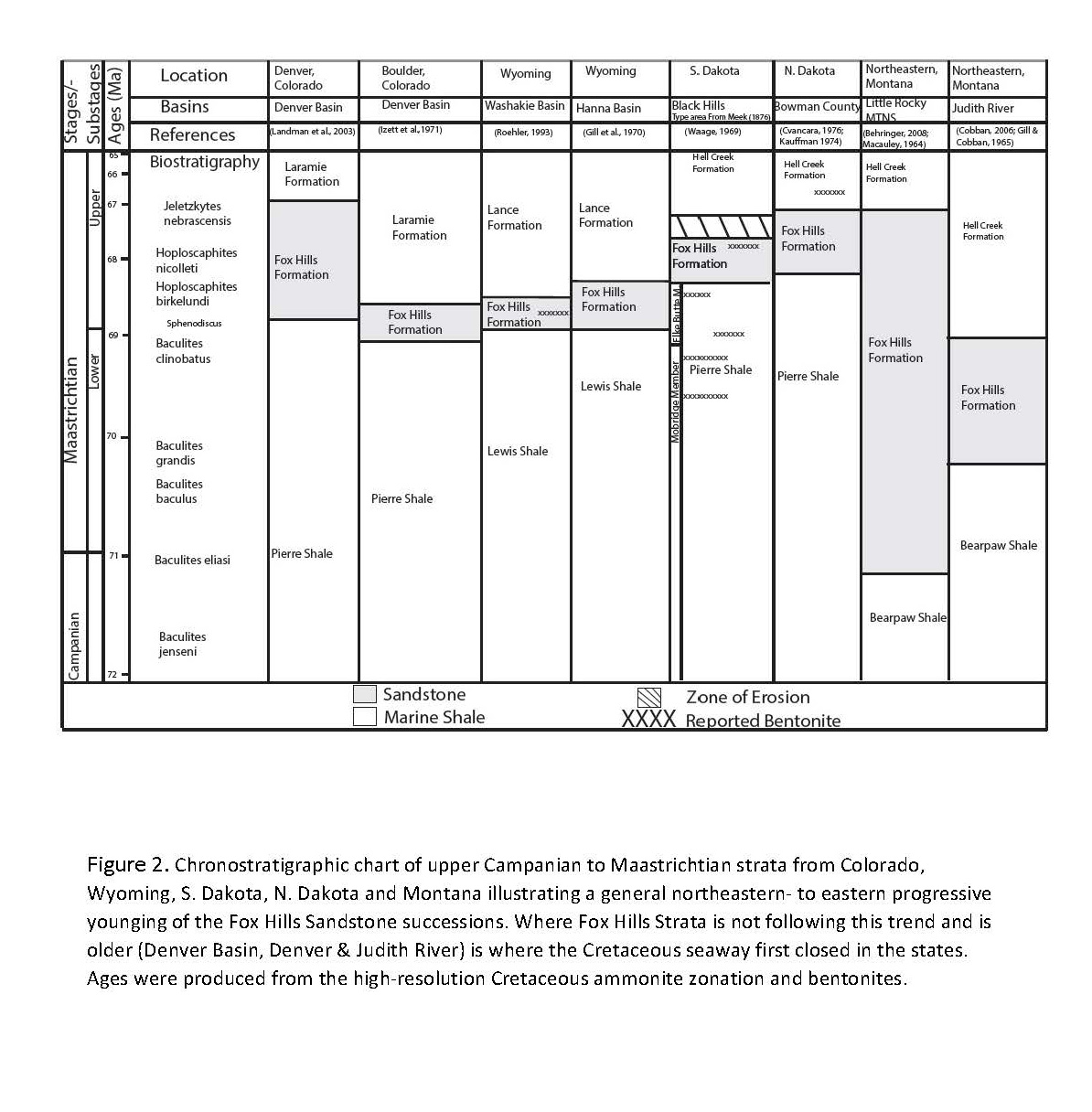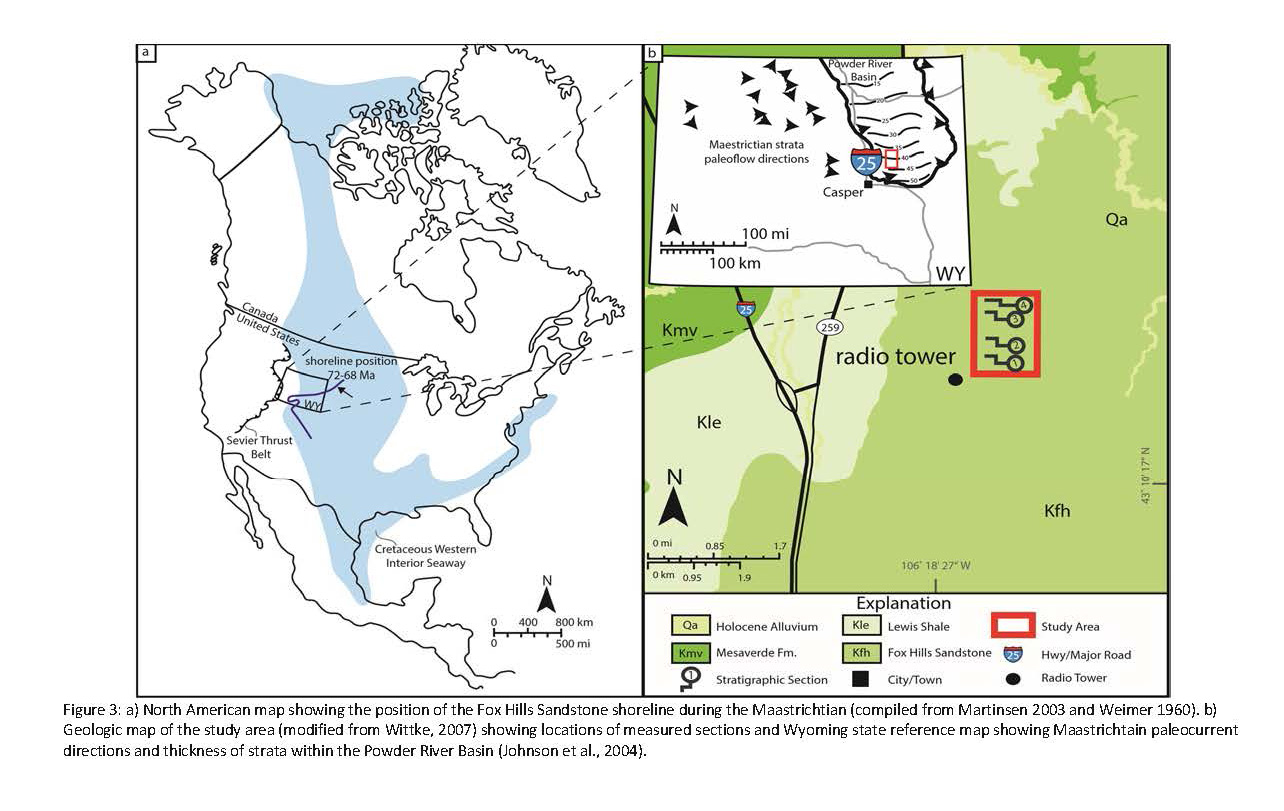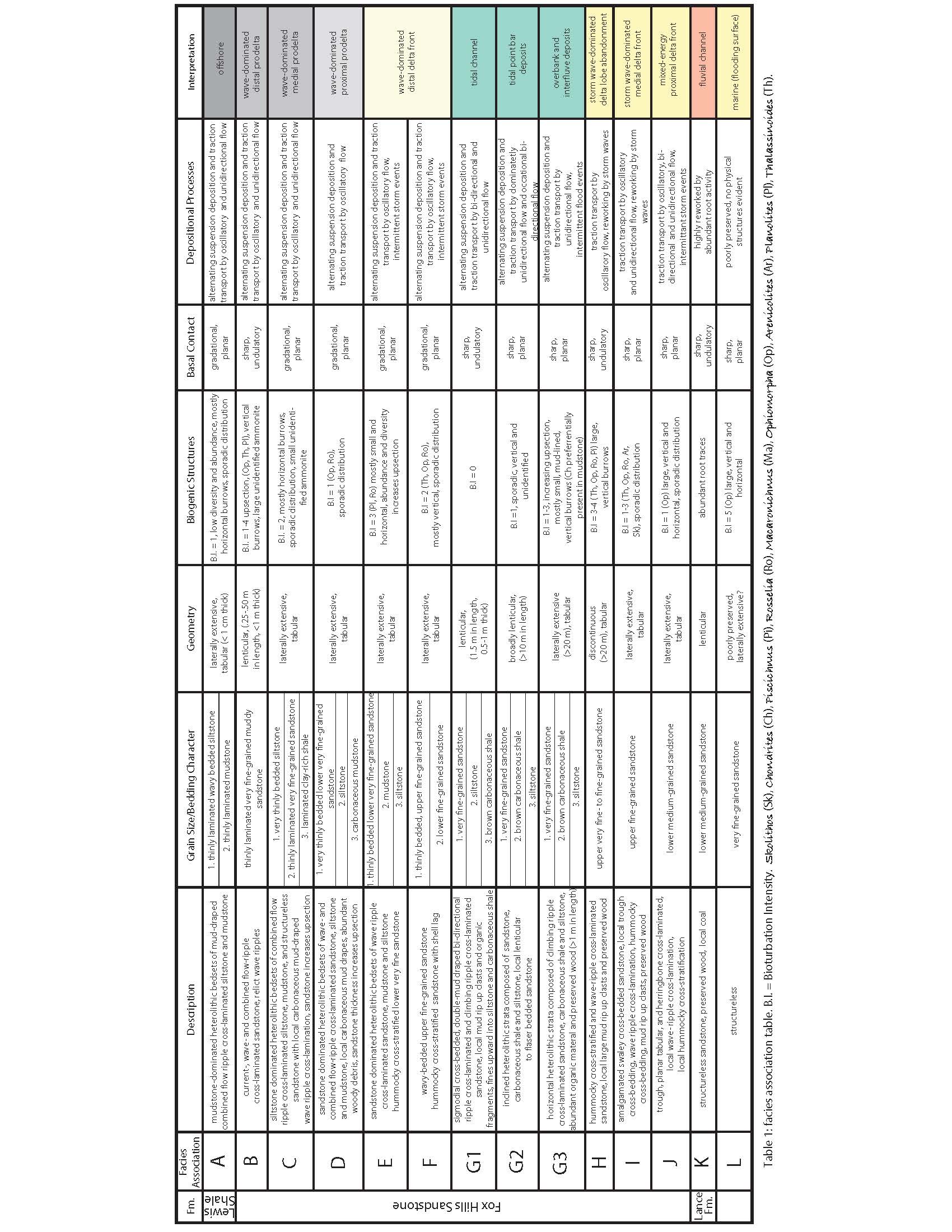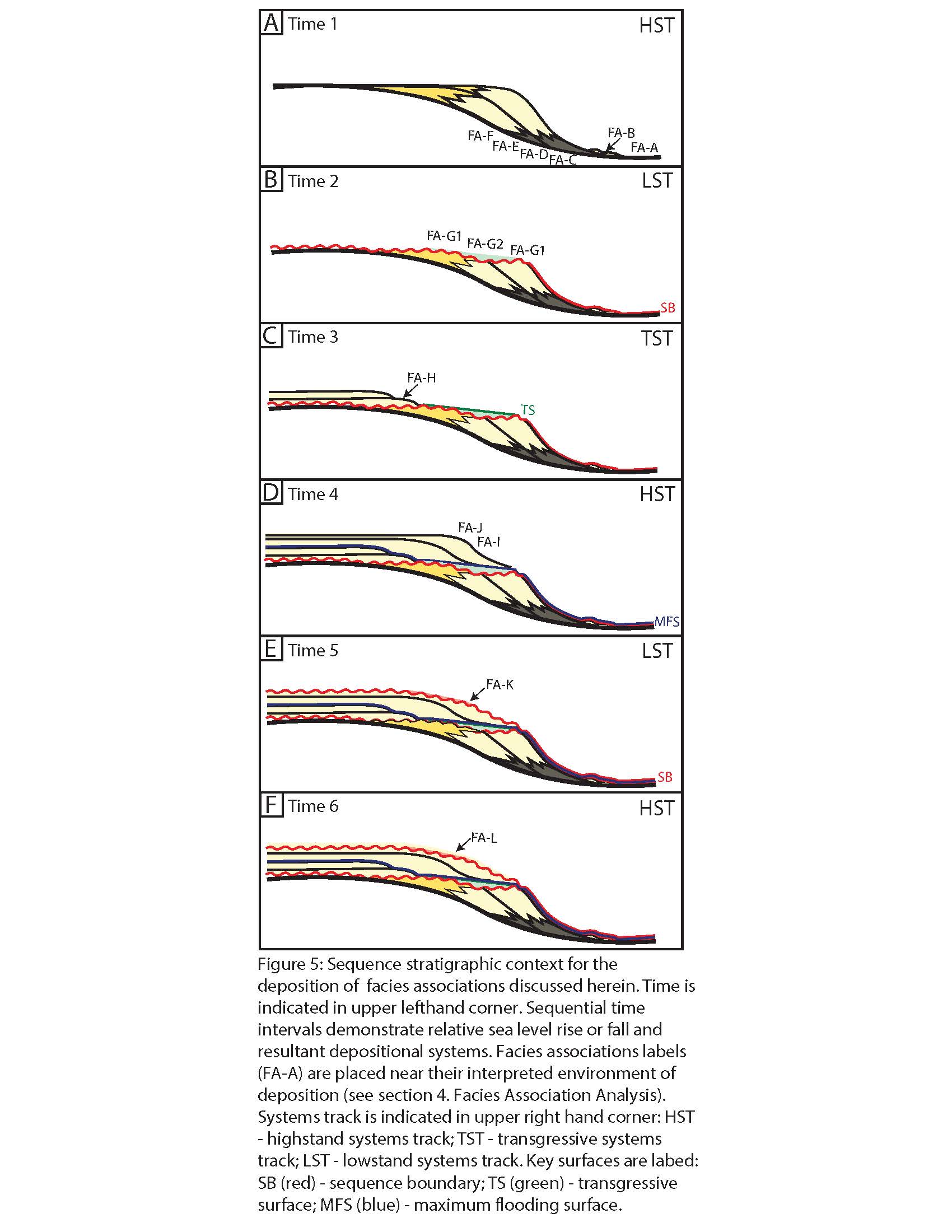Reports: UR855610-UR8: Megaregional Correlation and Sequence Architecture of the Fox Hills Sandstone: Implications for Unconventional and Conventional Reservoir Prediction
Jennifer Aschoff, PhD, University of Alaska, Anchorage
Project Summary:
Forced regression is the main process that builds continental margins, yet its mechanics, rates and constituent deltaic stratigraphies are not fully understood. Shoreline sandstones of the Fox Hills Ss. record large-scale forced regression in low-gradient, shallower water conditions during retreat of the Western Interior Seaway, where shorelines prograded ~1300 km from ~72 Ma to 68 Ma. The Fox Hills Ss. offers a unique opportunity to investigate forced regressive shoreline processes, resultant deltaic facies tracts, degree of topset/foreset preservation and associated reservoir characteristics. Despite numerous local studies of the Fox Hills Ss., there is no megaregional framework positioning local studies into context. The regional context is the first step needed to assess stratigraphic architecture, 1st order deltaic stratigraphies (e.g., topset- vs foreset-dominance) and deltaic processes (e.g., wave, tide, river) within this framework. Two main goals of the research are to: (1) establish a megaregional (1300 km scale) sequence-stratigraphic framework for the Fox Hills Ss. from CO to ND that connects previous studies in CO, WY and MT; (2) integrate 4 detailed outcrop study areas that characterize outcrop-based log patterns, facies, topset-foreset preservation and degree of incision in Fox Hills deltas to determine where topset- and foreset-dominated deltas are positioned. The project is significant to the petroleum industry because it will: (a) improve reservoir prediction in similar forced regressive intervals by characterizing 1st order stratigraphies in a rapidly prograding, shallower-water, lower-gradient shoreline succession, and (b) identify low-clay, oil-shale potential in the down-dip shale equivalent (Pierre Shale) by reconstructing deltaic systems.
Preliminary Results:
Megaregional sequence-stratigraphic correlation provides the basic framework to delineate stratigraphic architecture and distribution of depositional processes (e.g., wave, tide, river) within this framework. A megaregional (1300 km scale) dataset consisting of 15 new stratigraphic profiles, 12 published stratigraphic profiles, 600 raster well-logs and 90 digital well-logs were compiled using PETRAtm (Figure 1). New outcrop observations, coupled with subsurface data, provided the basis for the regional sequence-stratigraphic correlation. Biostratigraphic and geochronolgic data were synthesized into a detailed chronostratigraphic framework for the Fox Hills Sandstone and adjacent stratigraphic units from Colorado to Montana. The chronostratigraphic framework provided insight into the temporal connection of Fox Hills shorelines to their fluvial feeder systems, and calibrated the sequence-stratigraphic correlation (Figure 2). Regional subsurface to outcrop correlation and integration of biostratigraphic/geochronologic data delineates three, sharp-based, strongly offlapping sequences within the Fox Hills S.s. from Denver to Ft Peck. At least two incised valley systems are present: (1) an older system in East-Central WY at the contact between the Lewis Sh. and Fox Hills S.s., and (2) a younger system marked by the Colgate S.s. that rests atop the Fox Hills S.s. near Ft. Peck, MT. The north- to northeast-younging valley systems fed associated north- to northeast-directed, offlapping, regressive shorelines. Analysis of the Fox Hills S.s. near Casper, WY defines 3 constituent high-frequency sequences, and a mixed-energy, forced-regressive deltaic system constituting part of the long-transit forced-regressive sequence set. As in other LAR wedges in the CFB, the Fox Hills S.s. is predominantly composed of sandy, forced-regressive deposits that alternate with muddy, transgressive valley-fills. These new data and preliminary correlations provide insight into the architecture, sedimentary process and products of long-transit (100's km) forced regression driven by the migration of dynamic subsidence in the foreland basin.
Detailed outcrop analysis provides critical insight into the facies, log patterns and potential reservoir geometry/connectivity within the regional context. A detailed outcrop dataset consisting of 4 stratigraphic profiles with outcrop GR curves, outcrop photomosics, and DJI Phantom drone footage was collected at Twentymile Hill, near Casper, WY (Figure 3). These data were used to define and characterize the geometries of 13 facies associations in the Fox Hills Sandstone in order to reconstruct reservoir geometry/connectivity in forced-regressive shoreline successions. The DJI Phantom 4 drone imagery was instrumental in tracing key surfaces and facies. Thirteen facies associations were defined within the succession (Table 1, Figure 4). The facies record deposition within a complex suite of offshore marine, wave- and tide-dominated deltaic, tide-influenced incised valley-fill, and fluvial environments. The facies stack into three high-frequency cycles that constitute one 3rd-order depositional sequence (Figure 5). Furthermore, we define a new incised valley system at the base of the succession that is not documented in the Fox Hills S.s. in the Denver Basin, or northward in Montana.
Preliminary Conclusions:
In conclusion, this study: (1) highlights a new incised valley at the base of the Fox Hills Sandstone, (2) defines 3 high-frequency, transgressive-to-regressive cycles within the overall forced regressive succession of the Fox Hills Sandstone, (3) interprets a mixed-energy forced regressive deltaic system within a long-transit regressive shoreline, (4) establishes the spatio-temporal connection of two incised valley systems that fed down-dip shorelines, and (5) delineate a local highland (possibly dynamic topography) in central WY that caused Fox Hills shorelines to diverge, whereby shorelines prograded both north and south with the draining of the Western Interior Seaway (WIS). Collectively, these observations contribute new insight into paleogeography and final retreat of the WIS, and highlight the regional framework and deposition processes of long-transit (>1500 km) forced regressive systems. Future work will focus on constraining the up-to-down dips connection of depositional elements, quantifying depositional element dimensions and determining delta orientations/sediment entry-points for the Fox Hills Sandstone and equivalent units.

